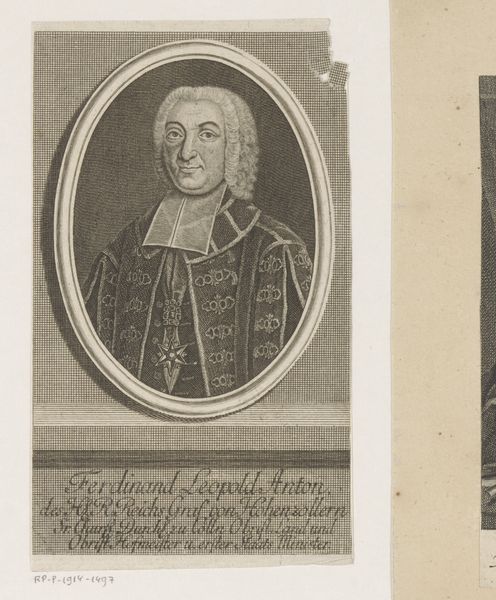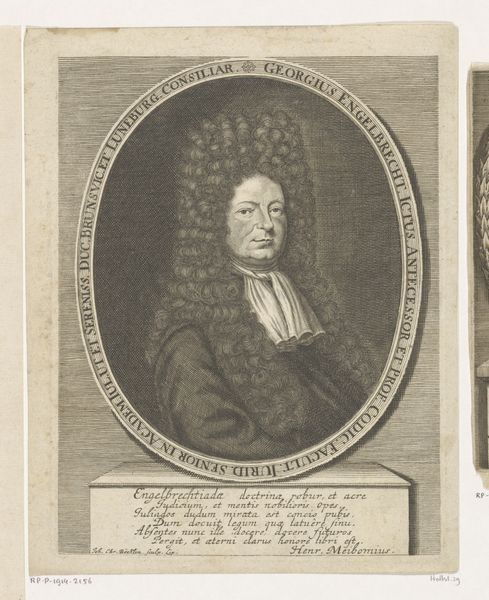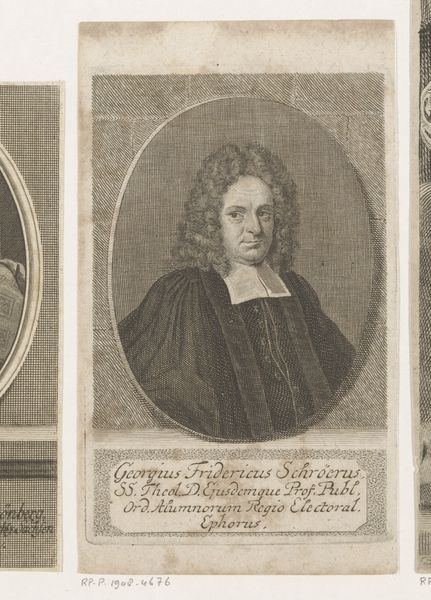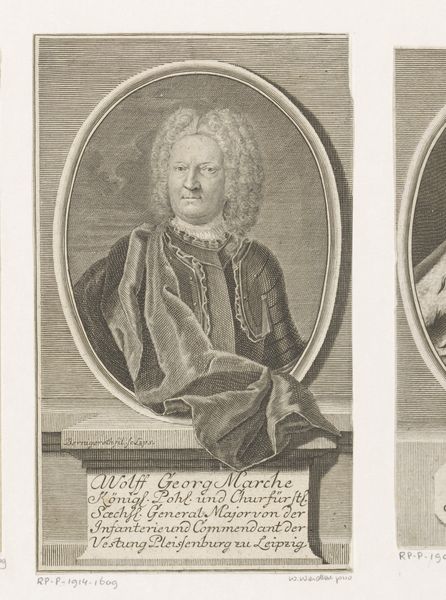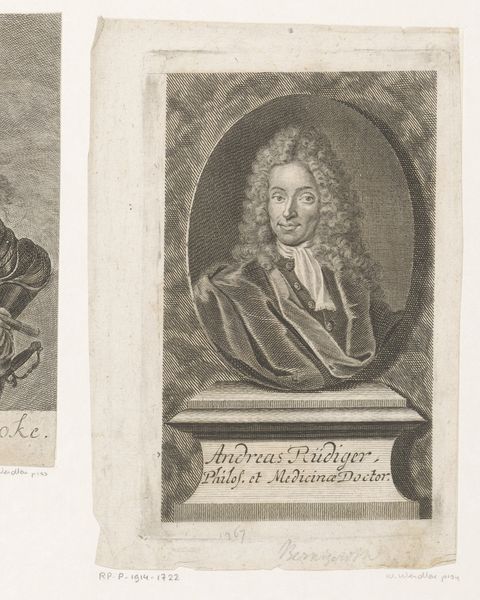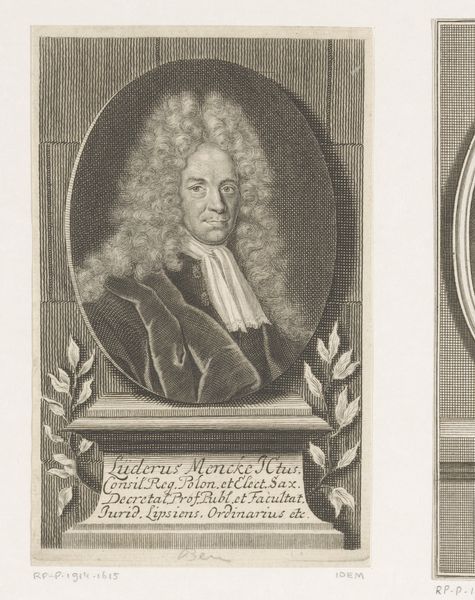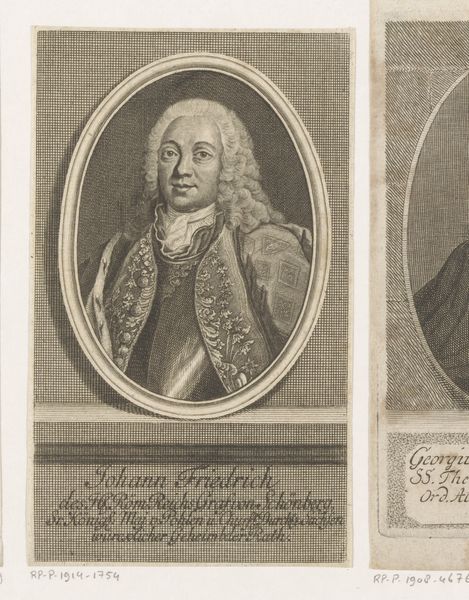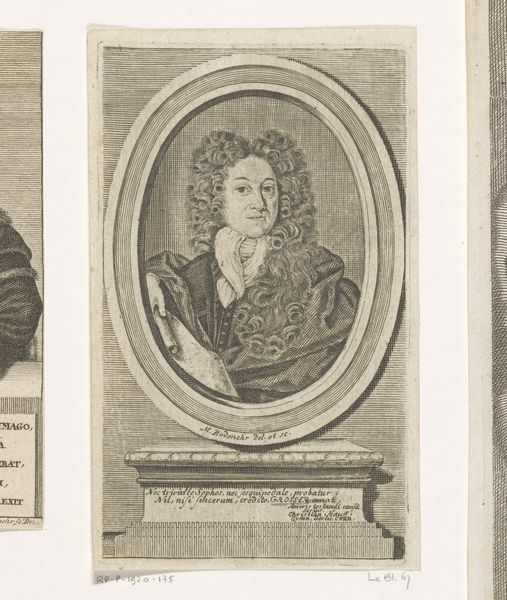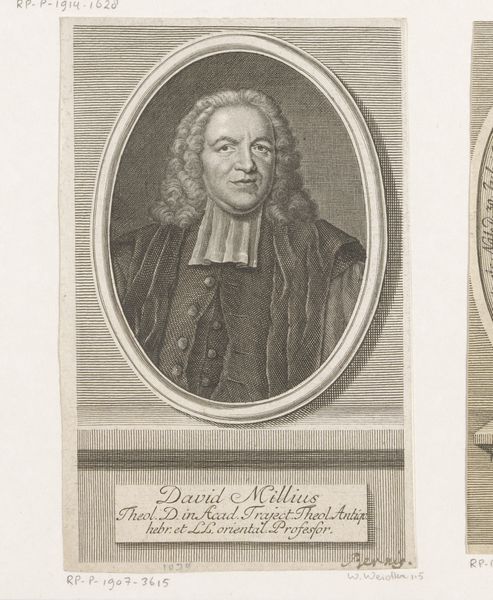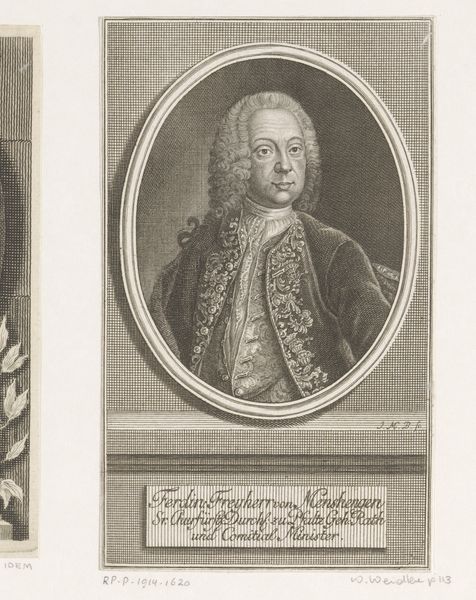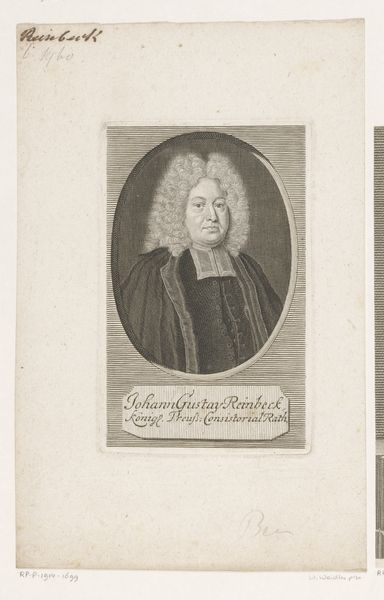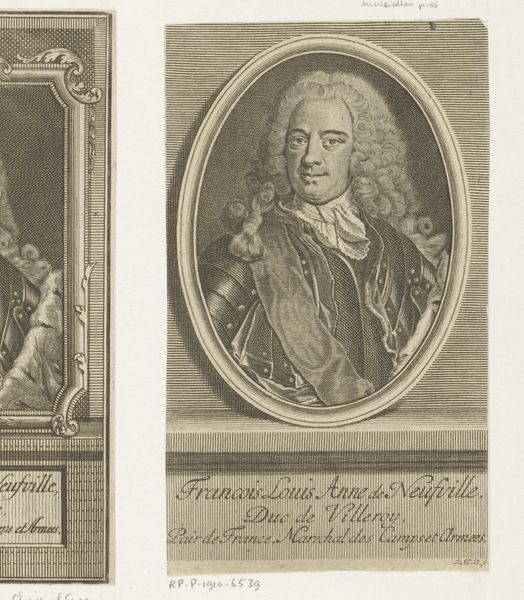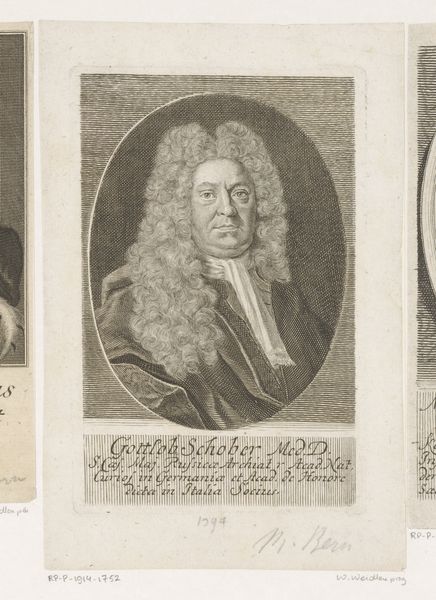
print, engraving
#
portrait
#
baroque
# print
#
engraving
Dimensions: height 155 mm, width 100 mm
Copyright: Rijks Museum: Open Domain
Curator: Here we have a fascinating print dating back to somewhere between 1735 and 1744, titled "Portret van Thomas Pellet." It's attributed to Johann Martin Bernigeroth and is an engraving. What are your initial thoughts on it? Editor: My first impression is… proper. Buttoned-up proper, like a tightly laced corset of expectations. All those tiny engraved lines, so precise and controlled, seem to trap him in amber. Curator: Indeed. It certainly speaks to the era. Bernigeroth was working in a time where portraiture was a tool for establishing social standing. Notice how the framing mimics classical portrait busts—elevating Pellet. Editor: And the oval format? Makes him look like he’s peeking out of a very serious egg. Does the inscription at the bottom give any insight? Curator: Absolutely. It identifies him as Thomas Pellet, M.D., and indicates his role as president of the Royal College of Physicians in London. These details contextualize Pellet's role in the burgeoning professional class and the prestige attached to it. The College played a critical role in shaping medical practice, advocating for standards, and policing unqualified practitioners. Editor: So this portrait functions, at least in part, as a visual endorsement from a learned society. And Bernigeroth, the artist, serves almost as an official documentarian. I keep getting snagged on the eyes. Direct but...I sense no real life there. Just the faintest flicker of human under layers of expectation. Curator: I see your point. Portraits in the Baroque and early Rococo periods could prioritize representation over emotional expression, emphasizing status, achievements, and lineage rather than individual personality. Yet, that in itself reflects the social values of the period. He stares resolutely ahead—his professional reputation at stake. Editor: Right, it’s less about who *he* is, and more about what he *represents*. Almost a typecast human, ready to be slotted into his appropriate place in the societal hierarchy. Thank you for bringing out those historical details. Now I appreciate this portrait less as an object, and more as a relic of a fascinating cultural context. Curator: Precisely. The print now speaks a little louder and offers a fascinating glimpse into a particular social strata. And that interplay is precisely what makes understanding this era so captivating.
Comments
No comments
Be the first to comment and join the conversation on the ultimate creative platform.
